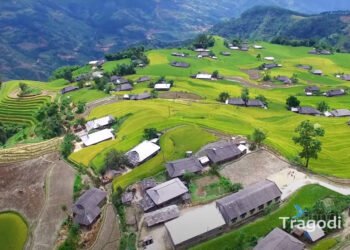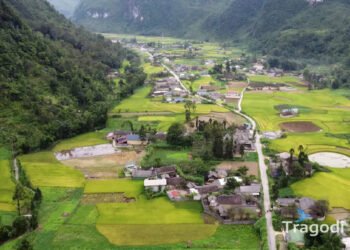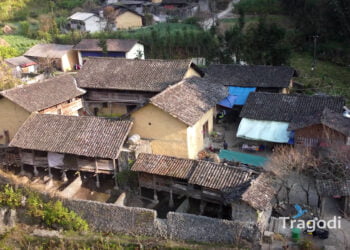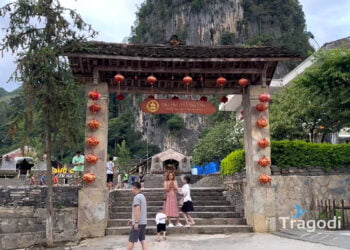
People
The people of Ha Giang are hardworking, patient, and willing to overcome difficulties and obstacles to develop agriculture on the rugged mountainous lands. They have created terraced fields, led water sources to grow wet rice, created fruit gardens, and processed various herbs in nature to serve life.
The people of Ha Giang have many traditional crafts such as forging, weaving, basketry, jewelry making… They live in harmony with nature and respect spiritual values, expressed through festivals, customs, customs, beliefs, folk songs, proverbs, legends…
History
The history of Ha Giang is also very rich and heroic. Ha Giang used to be a part of the ancient Van Lang country, then belonged to the three Thai chieftains. During the Ming occupation, Ha Giang was called Binh Nguyen district, then changed to Binh Nguyen county, then Vi Xuyen county. At the end of the 17th century, the Thai chieftain offered the land to China, until 1728, China returned a part of the land from the Tu Long mining area to the Lo River to Dai Viet.
In 1895, the boundary of Ha Giang was determined as on the map today. After 1954, Ha Giang province had a provincial town of Ha Giang and 4 districts: Bac Quang, Dong Van, Hoang Su Phi, Vi Xuyen. On December 15, 1962, Dong Van district was divided into 3 districts: Dong Van, Meo Vac and Yen Minh; Vi Xuyen district was divided into 2 districts: Vi Xuyen and Quan Ba.
Ha Giang is also the place where many resistance wars against French colonialism and Chinese invaders took place, leaving many historical relics such as Vi Xuyen battlefield, Dong Van battlefield, Bac Quang battlefield…
Culture
The culture of Ha Giang is the crystallization of many distinct beauties of the ethnic groups living here. Each ethnic group has cultural characteristics such as costumes, houses, cuisine, art, festivals…
Some unique cultural features of the ethnic groups in Ha Giang can be mentioned as:
- The Mong people have traditional costumes such as long dresses, tight pants, round hats, scarves, silver jewelry; The house is a stilt house, an earthen house or a stone house; cuisine includes sticky rice cakes, corn wine, roast pork, smoked buffalo meat; Art includes khen singing, xoè dancing, sạp dancing; Festivals include Gầu Tào festival, buckwheat flower festival, market fair festival…
- The Dao people have traditional costumes such as long dresses, tight pants, round hats, scarves, silver jewelry; The house is a stilt house, an earthen house or a stone house; cuisine includes sticky rice cakes, corn wine, roast pork, smoked buffalo meat; art includes khen singing, xoè dancing, sạp dancing; festivals include Gầu Tào festival, buckwheat flower festival, market fair festival…
- The Tay people have traditional costumes such as round-necked shirts, tight pants, hats, scarves, silver jewelry; the house is a stilt house, an earthen house or a stone house; cuisine includes square cakes, sticky rice cakes, sticky rice wine, roast pork, smoked buffalo meat; art includes lượn singing, lion dancing, sạp dancing; festivals include Long Tồng festival, buckwheat flower festival, market fair festival…
Ha Giang is an attractive destination for those who love to explore the pristine beauty and diverse cultural identity of ethnic groups. When you come to Ha Giang, you will admire the stunning natural landscapes. You will also learn about the culture, history, cuisine… of the ethnic minorities. Hà Giang is a colorful and flavorful picture of Vietnam, a destination that cannot be missed in the journey to explore this country.










